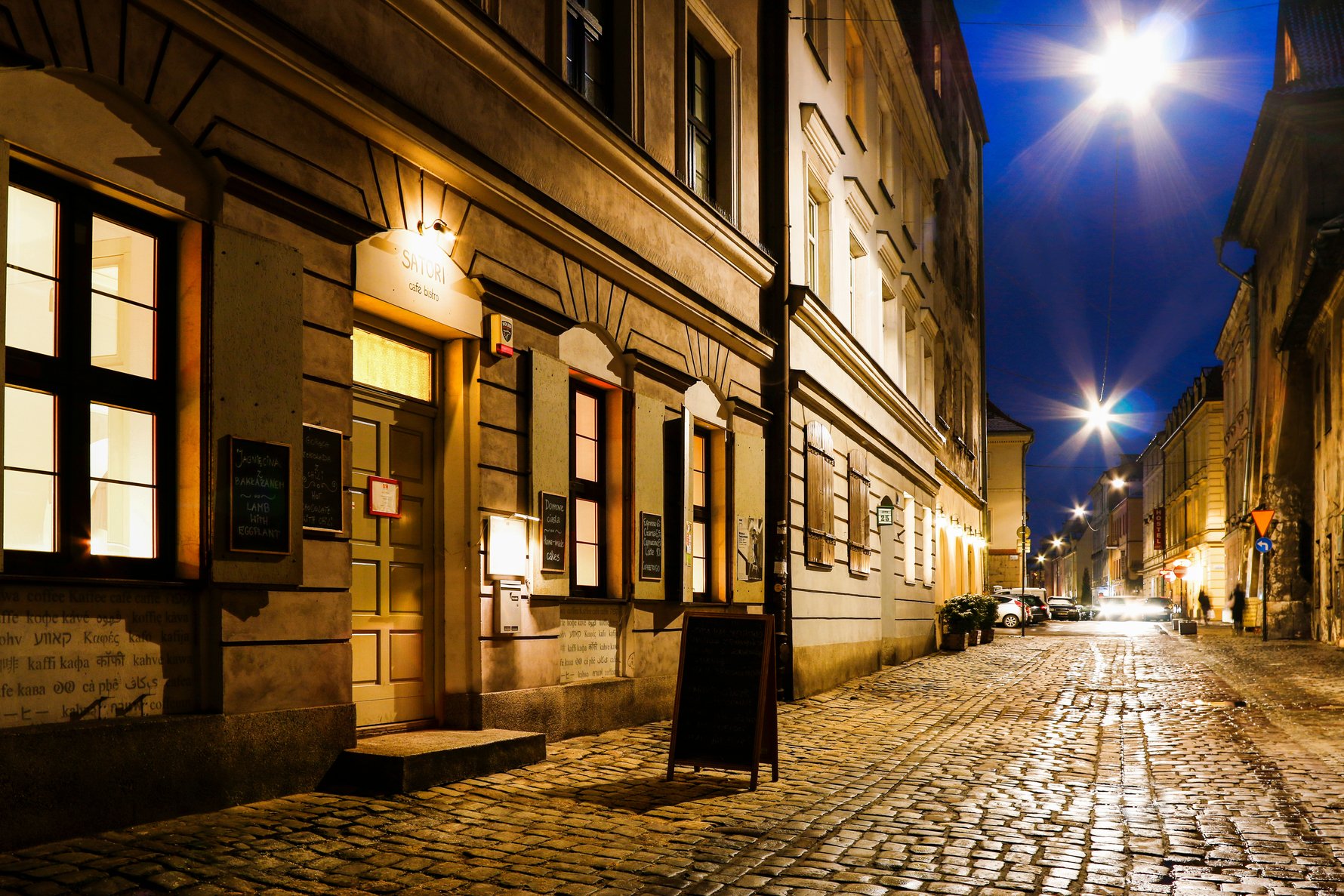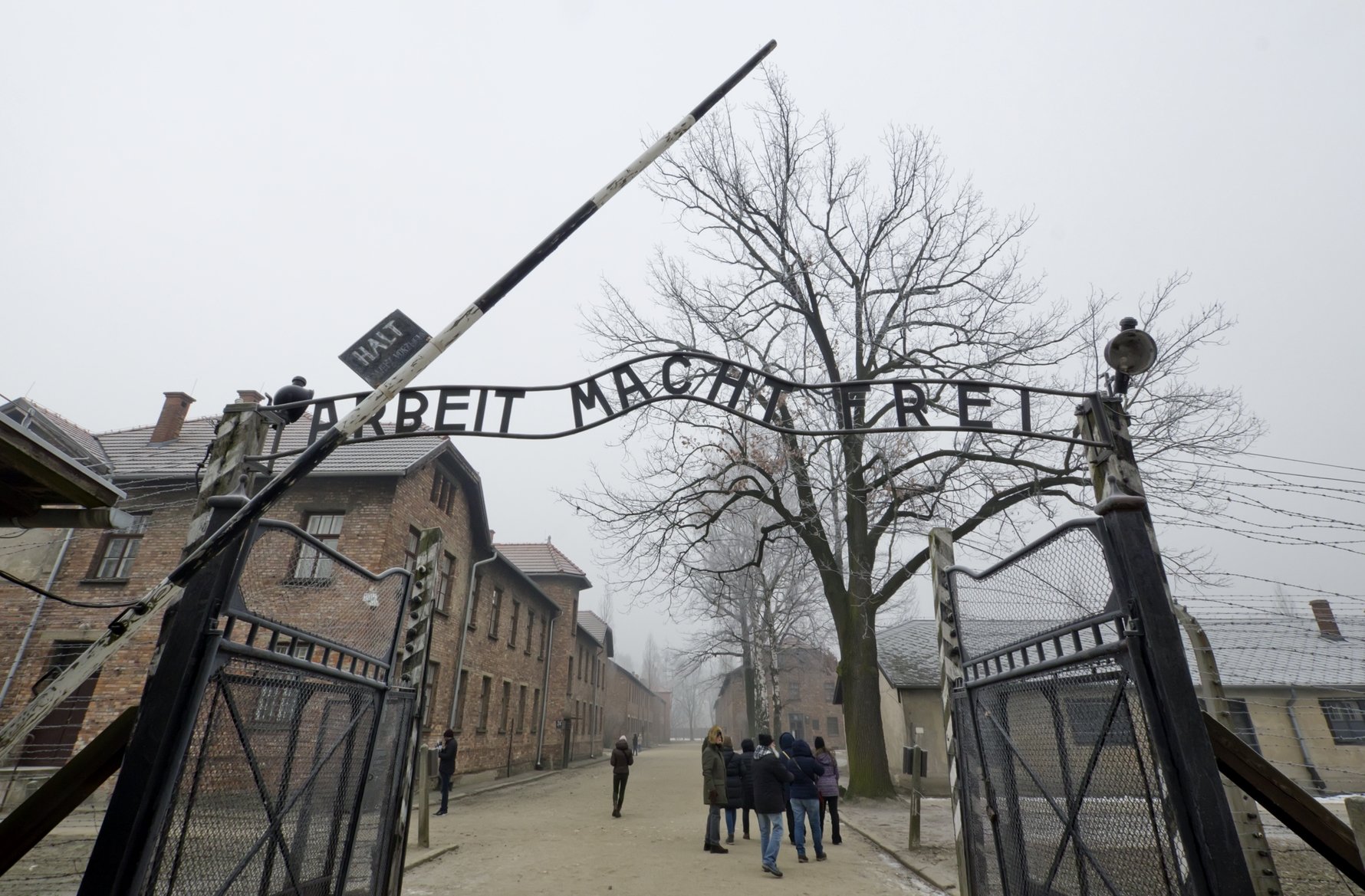Kraków is the largest international tourist destination in Poland, and while its gorgeous, well-preserved Old Town and idyllic location on the Vistula river are the city's biggest selling points today, there was one particular event that brought the city back into the world's contemporary consciousness...
On March 4th, 1993, Steven Spielberg's Schindler's List premiered in cinemas around the world, forever changing our perception of what happened during the WWII Holocaust. Spielberg, who one of the world's most famous and acclaimed film directors, became interested in the story of Oskar Schindler, the German businessman who saved the lives of over 1,000 Jewish refugees during World War II, when he read Thomas Keneally's book, Schindler's Ark, in 1982. The book had a profound impact on Spielberg, who was struck by Schindler's heroism and humanity, in addition to touching on his own family history (Spielberg is descended from Ukrainian Jews who were directly affected by the Holocaust, and was severely bullied for being Jewish in his childhood) as well as a desire to honour the memory of the victims of the Holocaust. Spielberg, known for big Hollywood blockbusters like Jaws, E.T. and the Indiana Jones franchise, did not immediately set out to make the film, as he felt he didn't have the emotional maturity or experience to do the story justice at the time.

When the time came, however, Spielberg worked closely with Holocaust survivor and historian Simon Wiesenthal, as well as survivors and experts in the field, to ensure that the film was as accurate as possible. He also insisted on filming the movie in black and white, a decision that was controversial at the time but one that he felt was necessary. Aside from capturing the starkness and bleakness of the concentration camps, Spielberg has also stated that 'I only know the Second World War in black and white,' referring to the newsreel footage of the conflict that he obsessed over in his younger years. The pained violin solos of John Williams incredibly emotional score, the gorgeous cinematography of Janusz Kamiński (in the first of many collaborations with Spielberg), and the decision to film on location in Kraków and Oświęcim (the Polish name for Auschwitz) all gave the film a deep emotional resonance that stayed with viewers after the credits rolled. The critical and commercial success of Schindler's List, including seven Academy Awards and a legacy that lasts to this day, is what first put Kraków in the conscience of millions of cinema-goers and also jump-started tourism in the area. In this article, we point out some key locations in and around Kraków that can still be visited today. NOTE: The movie clips that we have included in this article contain content that may be distressing to some viewers.

Exodus to the Kraków Ghetto | Piłsudski Bridge
During Nazi occupation, Kraków's Jewish community, centered in the Kazimierz district, was forced to resettle in a ghetto in Podgórze on the other side of the Vistula River before the deadline of March 20, 1941. One of two bridges used in this mass exodus was Piłsudski Bridge, which was opened in 1933 and still stands today, giving Spielberg an authentic shooting location. The handsome steel-riveted bridge can be clearly seen at the beginning of this clip...
Schindler meets Poldek Pfefferberg | St. Mary's Church
When the wily Oskar Schindler establishes contact with local smugglers inside a church, the location is none other than the iconic St. Mary's Church on Kraków's market square. This is also when Oskar Schindler first meets Leopold 'Poldek' Pfefferberg, the man who would later convince author Thomas Kennealy to write the book Schindler's Ark.
The Kraków Ghetto Square | ul. Szeroka, Kazimierz District
The historic location of 'Plac Zgody', the square at the heart of the Kraków Ghetto in Podgórze, probably would've been used by Spielberg, if there hadn't been so many modern additions made to the area - glass-fronted buildings, a bus stop and some ugly early 1990s signage. For this reason, location scouts recommended ul. Szeroka (Wide Street) in the Kazimierz district, which had historically served as the town square of the village of Bawól during the middle ages, and whose surrounding buildings had changed very little since WWII. Ariel Restaurant is where Spielberg, his family, and the production crew dined on numerous occasions. This is one of many scene filmed on ul. Szeroka:
Płaszow Concentration Camp | Liban Quarry
Whilst the site of the concentration camp at Płaszow existed as a memorial site at the time of the film's production, a smaller-scale replica was made at the Liban Quarry, which included a reconstruction of Amon Goeth's villa. The rusted towers, part of the original quarry site that still exists today, can be seen in numerous shots.
Fragments of Spielberg's production, such as the ruins of the aforementioned villa, still remain in Liban Quarry, including part of the road made of Jewish tombstones created especially for the film. Keep in mind that public access is quite difficult, and many of these fragments are now largely buried in undergrowth. It should be noted that the quarry saw many individuals perish in harsh forced labour conditions - another atrocity committed by the Nazis.
The Liquidation of the Kraków Ghetto | Podgórze & Kazimierz
At the beginning of the famus ghetto liquidation scene from Schindler's List, Oskar Schindler and his secretary/mistress observe this harrowing ordeal from horseback on a hill above the Ghetto, when we witness the iconic 'girl in the red coat.' This is Lasota Hill, located above ul. Rękawka in Podgórze, though the view (looking north-east) is now largely obscured by trees in the spring and summer. In the scene, when families are being cleared out of the tenement building and their possessions thrown over the balconies, these stirring visuals were filmed at Jozefa 12, in what is now known as 'Schindler's Passage'. Later, Mrs. Danka Drezner is told to hide under a staircase by a friend of her son Adam, who then tells the oncoming Nazis that there's no one left in the building. This staircase, although slightly modified since 1993, is on the street level of the same building. You can see both Lasota Hill in Podgórze and 'Schindler's Passage' in this clip:
When Poldek Pfefferberg emerges from the sewer and then narrowly avoids being shot by Amon Goeth and his accompanying squad of SS, this scene was filmed at the intersection of ul. Jakuba and ul. Ciemna in Kazimierz.
The front of Schindler's Factory | Schindler's Factory
The site of Oskar Schindler's Enamel Factory, where he harboured Jews under the guise of essential workers, is located at Lipowa 4, and today, is home to the Schindler Factory Museum. Numerous shots of its facade and one of the interior staircases are featured in the film, such as the scene where Regina Perlman persistently tries to get an audience with Schindler, the charming ladies' man:
Schindler's Apartment - Straszewskiego 7
Oskar Schindler's residence in the movie is accurate - He did indeed live at ul. Straszewskiego 7, in an apartment on the third floor. As it is in the movie, the Nussbaum family lived here before they were relocated to the Jewish Ghetto, and, sometime after, Schindler moved in. While the building itself is typical of early 20th-century apartment buildings around Kraków, it is located at the bottom of Wawel Castle! In the 'immolation', when the ashes from the mass cremation at Chujowa Górka descend from the sky like rain, we can see both the front of Straszewskiego 7 and the clock tower of Wawel Castle when Oskar Schindler leaves his apartment...
Auschwitz-Birkenau | Auschwitz Birkenau & Liban Quarry
Unfortunately, the administration of Auschwitz-Birkenau memorial site did not give Spielberg permission to shoot within the grounds of the infamous death camp site. The production crew, however, was permitted to shoot scenes from the outside. For this reason, we can see the actual railway line entrance at several points in the latter-half of the film. Other scenes depicting the interior of Auschwitz-Birkenau, including the nerve-racking shower scene, were also recreated in the Liban Quarry.




Comments